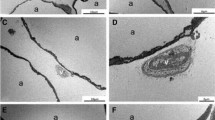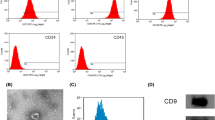Abstract
Background
Absorption of the autologous fat graft results in repeated harvesting procedures. The cost and complications increase with repeated procedures, but cryopreservation is one way to solve the problem. The aim of this study was to find an optimal temperature at which to store fat tissue with or without cryoprotective agents for long-term use.
Methods
Fat tissues harvested by liposuction were stored in normal saline, frozen in the freezer following the preset program, and cryopreserved at −20, −80, and −196°C. The other group of fat tissues was stored in hydroxyethyl starch using the same frozen procedure. Two and 7 days after cryopreservation, viability tests were conducted. The fat tissues were injected into nude mice 2 and 4 weeks after cryopreservation. Three months later the fat grafts were harvested for histologic examination.
Results
No significant differences in cell viability were found in either in vitro or in vivo experiments for the three preserving temperatures. The cryoprotective agent HES did not influence cell viability.
Conclusion
There were no differences in cell viability among the three temperatures and with the use of a cryoprotective agent. Cryopreservation for salvage management is a clinically practical method.








Similar content being viewed by others
References
Neuber G (1893) Fettimplantationen. Verhandlungen der Deutschen Gesellschaft für Chirurgie 1893:66 (In German)
Sattler G, Sommer B (2000) Liporecycling: a technique for facial rejuvenation and body contouring. Dermatol Surg 12:1140–1144
Coleman SR (2001) Structural fat grafts: The ideal filler? Clin Plast Surg 28:111–119
Guerrerosantos J (2000) Long-term outcome of autologous fat transplantation in aesthetic facial recontouring. Clin Plast Surg 27:515–543
Kaufman MR, Miller TA, Huang C, Roostaeian J, Wasson KL, Ashley RK, Bradley JP (2007) Autologous fat transfer for facial recontouring: Is there science behind the art? Plast Reconstr Surg 119:2287–2296
Rohrich RJ, Sorokin ES, Brown SA (2004) In search of improved fat transfer viability: a quantitative analysis of the role of centrifugation and harvest site. Plast Reconstr Surg 113:391–395
Smith P, Adams WP Jr, Lipschitz AH, Chau B, Sorokin E, Rohrich RJ, Brown SA (2006) Autologous human fat grafting: effect of harvesting and preparation techniques on adipocyte graft survival. Plast Reconstr Surg 117:1836–1844
MacRae JW, Tholpady SS, Ogle RC, Morgan RF (2004) Ex vivo fat graft preservation: effects and implications of cryopreservation. Ann Plast Surg 52:281–283
Wolter TP, von Heimburg D, Stoffels I, Groeger A, Pallua N (2005) Cryopreservation of mature human adipocytes: in vitro measurement of viability. Ann Plast Surg 55:408–413
Atik B, Oztürk G, Erdoğan E, Tan O (2006) Comparison of techniques for long-term storage of fat grafts: an experimental study. Plast Reconstr Surg 118:1533–1537
Green LM, Reade JL, Ware CF (1984) Rapid colorimetric assay for cell viability: application to the quantitation of cytotoxic and growth inhibitory lymphokines. J Immunol Methods 70:257–268
Shoshani O, Ullmann Y, Shupak A, Ramon Y, Gilhar A, Kehat I, Peled IJ (2001) The role of frozen storage in preserving adipose tissue obtained by suction-assisted lipectomy for repeated fat injection procedures. Dermatol Surg 27:645–647
Moscatello DK, Dougherty M, Narins RS, Lawrence N (2005) Cryopreservation of human fat for soft tissue augmentation: viability requires use of cryoprotectant and controlled freezing and storage. Dermatol Surg 31:1506–1510
Mazur P (1990) Equilibrium, quasi-equilibrium, and nonequilibrium freezing of mammalian embryos. Cell Biophys 17(1):53–92
Pasch J, Schiefer A, Heschel I, Dimoudis N, Rau G (2000) Variation of the HES concentration for the cryopreservation of keratinocytes in suspensions and in monolayers. Cryobiology 2:89–96
Liu J, Woods EJ, Agca Y, Critser ES, Critser JK (2000) Cryobiology of rat embryos II: a theoretical model for the development of interrupter slow freezing procedures. Biol Reprod 5:1303–1312
Davis DJ, Lee RE Jr (2001) Intracellular freezing, viability, and composition of fat body cells from freeze-intolerant larvae of Sarcophaga crassipalpis. Arch Insect Biochem Physiol 4:199–205
Murillo WL (2004) Buttock augmentation: case studies of fat injection monitored by magnetic resonance imaging. Plast Reconstr Surg 114:1606–1616
Moscatiello F, Aznar-Benitah S, Grella R, Jover JH (2009) Gluteal augmentation with cryopreserved fat. Aesthet Surg J 30(2):211–216
Acknowledgements
The authors thank research assistant Ms. Chi-Han Tsai and the Division of Experimental Surgery of the Department of Surgery, Taipei Veterans General Hospital for assisting in part of this article.
Disclosure
The authors declare that they have no conflicts of interest to disclose.
Author information
Authors and Affiliations
Corresponding author
Rights and permissions
About this article
Cite this article
Li, BW., Liao, WC., Wu, SH. et al. Cryopreservation of Fat Tissue and Application in Autologous Fat Graft: In Vitro and In Vivo Study. Aesth Plast Surg 36, 714–722 (2012). https://doi.org/10.1007/s00266-011-9848-z
Received:
Accepted:
Published:
Issue Date:
DOI: https://doi.org/10.1007/s00266-011-9848-z




